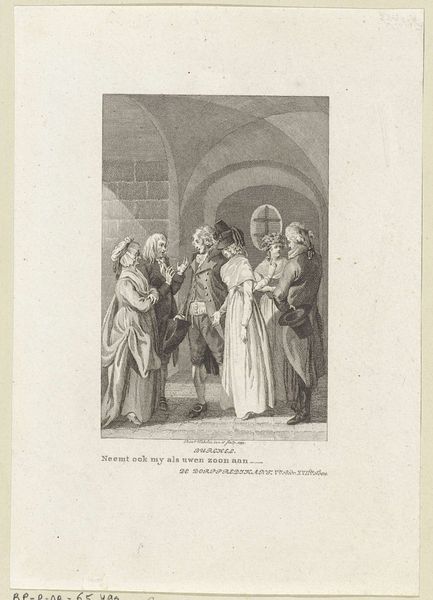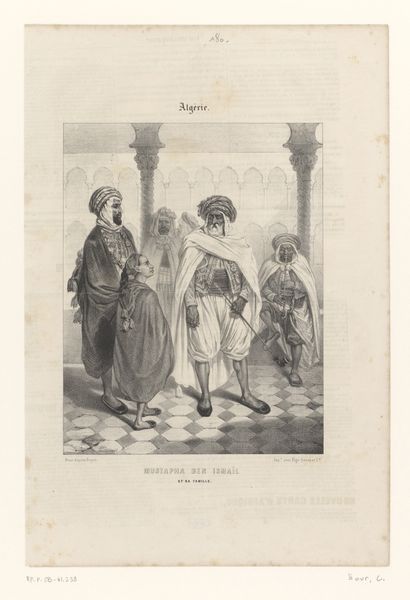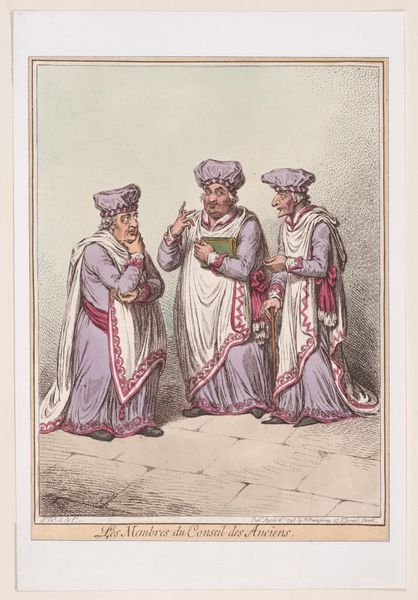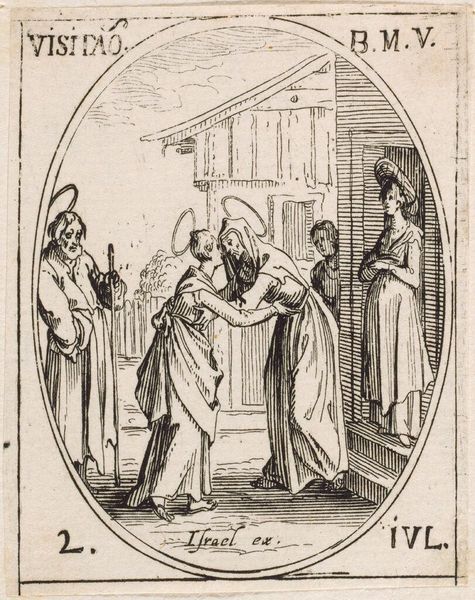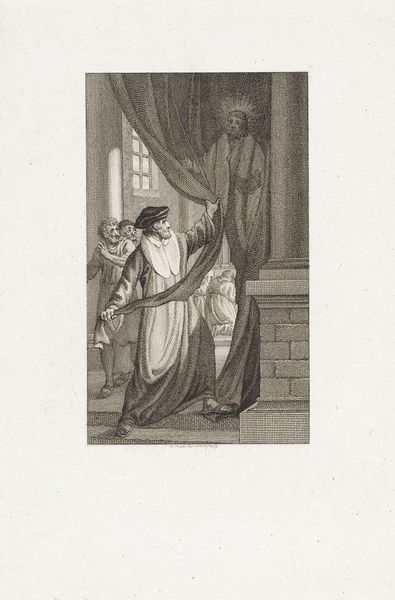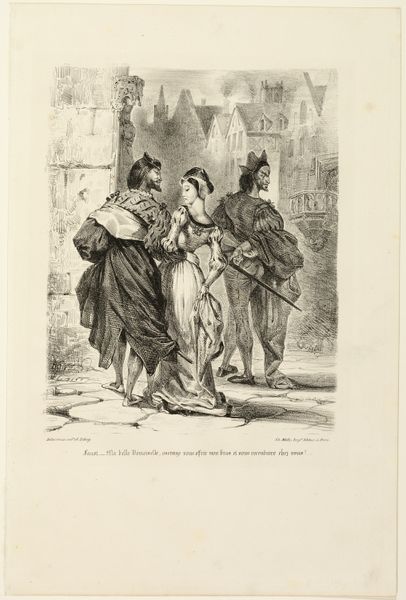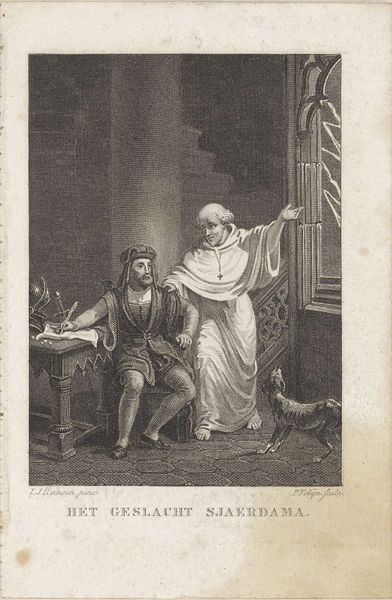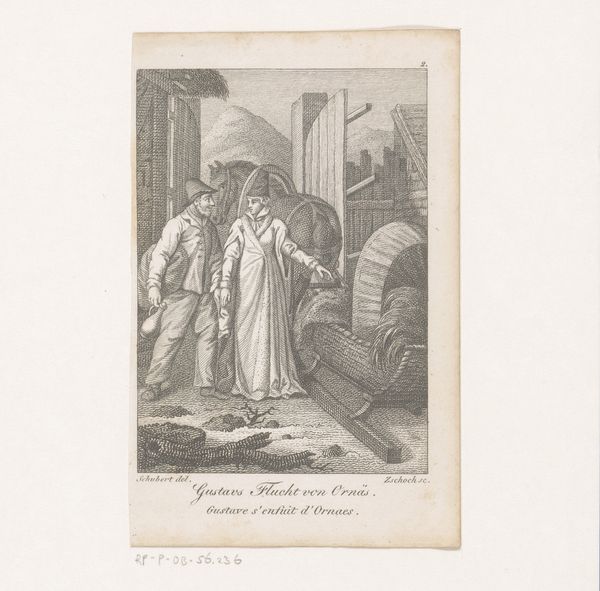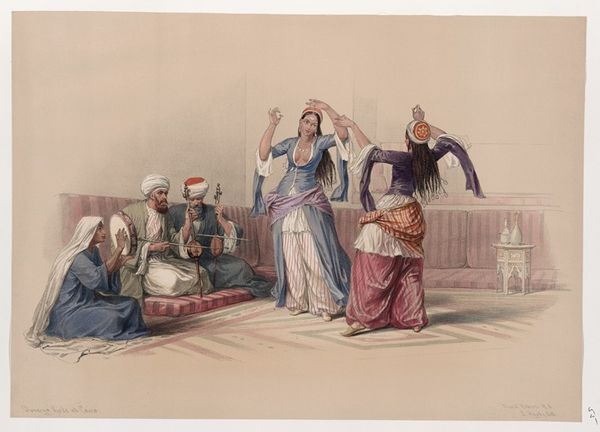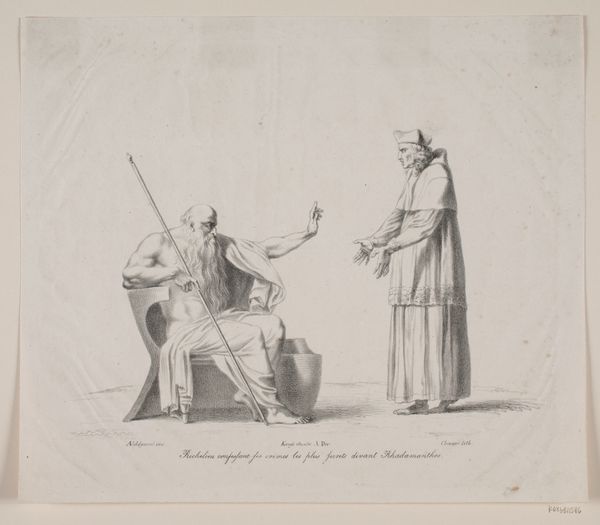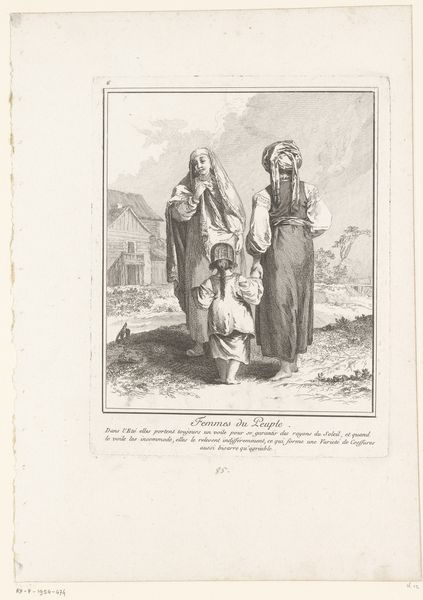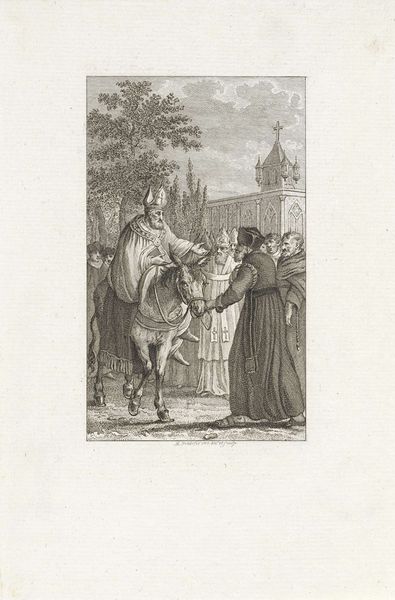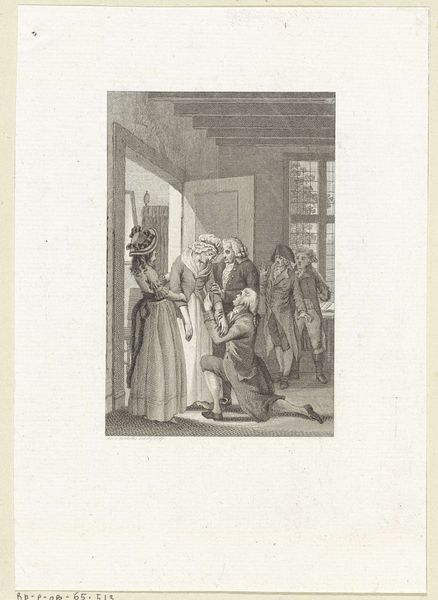
print, engraving
#
portrait
# print
#
romanticism
#
islamic-art
#
genre-painting
#
engraving
Dimensions: height 242 mm, width 153 mm
Copyright: Rijks Museum: Open Domain
Curator: Here we have "Bewoners van Egypte," or "Inhabitants of Egypt," a print created around 1807 by Ludwig Gottlieb Portman. What jumps out at you when you first see it? Editor: An immediate sense of voyeurism. The cool palette seems at odds with what I imagine the harsh Egyptian sunlight to be. There's a palpable distance, a sense of observing rather than experiencing. Curator: Portman wasn’t actually an eyewitness; these images often relied on second-hand accounts, feeding a European fascination with the 'exotic' East. The work is actually an engraving. It's incredibly detailed for the medium. Editor: And laden with orientalist tropes, wouldn't you say? The woman, veiled, almost secondary to the man and his elaborate pipe. It speaks to power dynamics, who gets to be seen, who gets to partake in leisure. Curator: Absolutely, and notice the background; the architecture is stylized, almost theatrical, creating a sense of stagecraft more than genuine portrayal. The longer I look, the more artificial it seems, as though constructed for European consumption. Editor: I'm struck by the clothing, so carefully rendered, highlighting differences and, ultimately, "othering". The details invite viewers to inspect, to dissect, turning the people into objects of study. What do you suppose it tells us about the period in which it was made? Curator: It shows the beginning of the Romantic period. Even while claiming scientific curiosity, art served to underline colonial ideologies. The artist had control over this unknown subject that the average Western European viewer would likely know nothing about. And the contrast with modern Egypt could not be any sharper, no matter your perceptions. Editor: A powerful point to end on, really, how artworks can reflect and shape perceptions across vast distances of space and time, highlighting historical context. Curator: It certainly gives us a lot to chew on and contemplate.
Comments
No comments
Be the first to comment and join the conversation on the ultimate creative platform.
